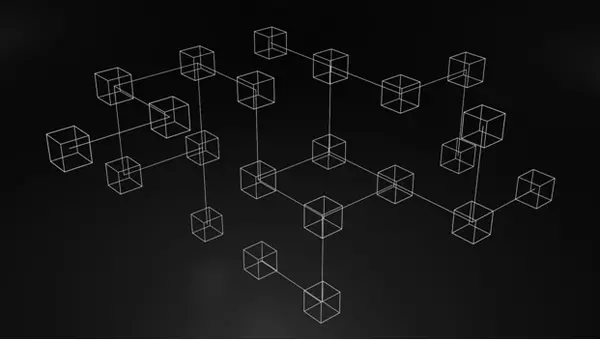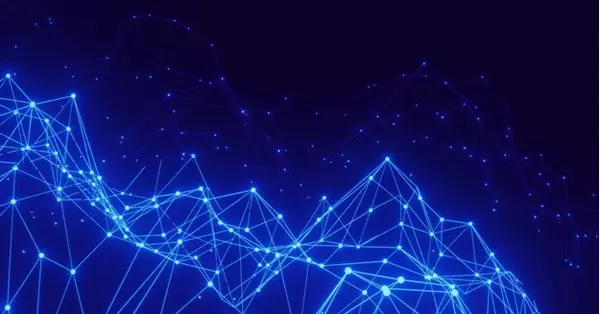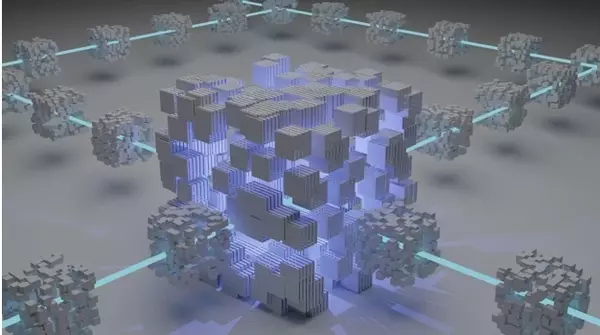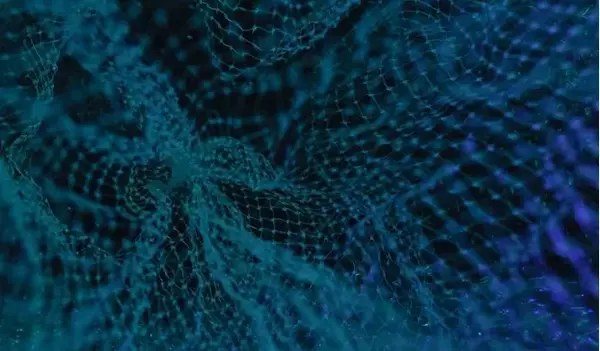It is hardly surprising that even traditional assets are undergoing a makeover in a world where digitization has taken center stage.
Discover the fascinating world of tokenization, a procedure that turns tangible and intangible assets into digital tokens using blockchain technology.
What if you could easily save a copy of your house, a work of art, or even stock in a company?
This article delves deeply into the intriguing field of tokenization, exploring its nature, workings, and potential applications in the future.
Table of Contents
The Magic of Tokenization Unlocked
Have you ever wished you could purchase your favorite work of art without going bankrupt? Tokenization makes that idea a reality.
Tokenization is the procedure of converting physical assets into digital tokens that can be traded on a blockchain. These tokens stand in for the underlying asset’s ownership, rights, or value. It’s similar to turning your assets into digital Lego blocks to make them portable and divideable.
● Tokenization makes assets more accessible by transforming them into tradable digital tokens.
The Foundation of Blockchain

Blockchain technology supports tokenization. It serves as the invisible glue that holds this virtual world together.
Blockchain is a distributed ledger that records transactions over a network of computers in order to ensure transparency, security, and immutability.
● The first blockchain program, created in 2008 by the mysterious Satoshi Nakamoto, was Bitcoin.
How Tokenization Functions? | How does Tokenization Work?
You might be wondering how this transformation happens. Here is a detailed instruction sheet.
● Identification of the Asset: Finding the Asset is the first step towards tokenizing it. Examples of this include fine art, real estate, and stocks.
● Smart Contracts: Since contracts made on the blockchain are written in code, they may be created that automatically carry out the terms. These contracts outline the criteria for exchanging and transferring the tokenized asset.
● Token Creation: Tokens are produced on the blockchain to symbolize ownership or asset value. Each token has a unique identity, making it possible to tell them apart from one another.
● Tokenization systems may demand KYC (Know Your Customer) and AML (Anti-Money Laundering) inspections to ensure legal compliance.
● Trading and Transfer: After they are created, tokens can be bought, sold, or traded on a number of digital asset marketplaces.
● Asset identification, the creation of smart contracts, the issue of tokens, and compliance checks are all tokenization steps, enabling efficient transfer and exchange.
Advantages of Tokenization or Benefits of Tokenization

Beyond being a sophisticated digital gimmick, tokenization provides a number of useful benefits.
● Liquidity: Because tokens can be traded at any time, buying or selling assets is easier because they are more liquid.
● Tokenization makes dividing assets into easier-to-manage, smaller units, expanding the range of available investments.
● Transparency: By keeping track of every transaction, blockchain reduces the likelihood of fraud and promotes transparency.
● Accessibility: Anyone with an internet connection has access to investment opportunities.
● Security: The blockchain’s robust security features protect assets and transactions.
Maximizing Your Digital Assets with Ada Staking
Ada Staking is a brilliant example of how blockchain technology can be applied to make money.
Ada, the native coin of the Cardano blockchain, can be staked to earn incentives. Ada stakes entail holding and “locking up” a certain amount of cryptocurrency to participate in the network’s consensus procedure.
● The first computer programmer in history, Ada Lovelace, inspired the name Ada.
Ada staking is a process that grants participants more Ada tokens while helping to protect the Cardano network. Ada staking gives you the chance to grow your digital assets over time while also boosting the blockchain’s security.
Ada Staking is one notable use of blockchain technology, but Cosmos Staking is another.
Cosmos, a blockchain network, enables users to stake ATOM, the network’s native money, to contribute to network security and governance.
Staking ATOM in the Cosmos ecosystem offers the chance to gain benefits while assisting in the network’s stability and functionality. Opportunities for maximizing digital assets through various staking methods, like Ada Staking and Cosmos Staking, are anticipated to play an increasingly significant role in the digital economy as blockchain technology develop.
A Look Ahead at Tokenization
Thanks to tokenization, the financial sector and beyond will see a shift. Soon, you might tokenize your car, cherished book, or even the daily cup of coffee. Only our imagination has the power to limit the possibilities.
● Fun fact: In 2021, an incredible $69 million Beeple digital collage was sold as an NFT (Non-Fungible Token)!
Beyond Finance Tokenization
The benefits of tokenization extend well beyond the financial industry. Here are a few sectors where tokenization is making a difference, among others:
● Tokenized real estate enables international investment opportunities, fractional ownership, and real estate transactions.
● Art and collectibles: Artists may tokenize their creations as NFTs to provide traceability and compensation for each resale.
● Supply chain: Tokenization increases supply chain transparency, enabling consumers to trace a product’s journey from its place of origin to its destination.
● To ensure that musicians, writers, and other content creators are adequately compensated for their efforts, intellectual property may be tokenized.
● Tokenizing virtual assets and in-game items could lead to developing new gaming economies.
● Medical records tokenization improves patient care by allowing secure, portable access.
More than just a technological marvel, the art of tokenization signifies a paradigm shift in how we see and utilize assets.
By employing blockchain technology, we can raise the bar for liquidity, accessibility, and security in the financial industry.
You never know when you might be swapping digital tokens for that famous pizza slice or a ticket to your favorite movie, so keep an eye out for the next significant tokenization movement!
Recognizing tokenization’s revolutionary effects on numerous facets of our lives is crucial as the idea gains traction. The possibilities go beyond the realms of finance and technology and into unexplored territory.
Consider a world where every work of art, every piece of real estate, and every collection is seamlessly digital and tradable, completely changing how we acquire, trade, and invest in assets.
This could promote a more egalitarian and fair global economy by democratizing access to investments and assets that were previously only available to the wealthy few.
Additionally, the underlying blockchain technology that underpins tokenization is poised to upend established business structures in various sectors.
The potential uses range from the secure management of healthcare information through tokenization to the use of digital assets to power gaming economies. How we engage with the world around us may be revolutionized by the capacity to confirm the provenance and authenticity of a work of art, follow a product’s path through a transparent supply chain, or ensure content creators are fairly compensated for their work.
The potential of tokenization, which is just beginning to take shape, is only truly limited by our imagination. Keep an eye on developments and prepare to welcome the upcoming wave of digitization that is changing our world.
Threats to the Future
While tokenization has several promising futures, some difficulties are still associated with this digital transition. Assuring the security and control of digital assets is a major obstacle.
Strong cybersecurity measures are increasingly necessary as more assets are tokenized in order to safeguard against fraud and theft.
Additionally, there is a heated discussion regarding how blockchain technology will affect the environment, particularly regarding energy use.
Taking care of these issues as tokenization grows in popularity will be essential to ensuring its long-term success.
The Importance of Adoption and Faith
For tokenization to be successful, trust is crucial. Assets must be handled by institutions and individuals who have confidence in the security and dependability of blockchain technology, which goes beyond simply digitizing assets.
This trust is likely to grow as adoption rates rise and more people and businesses get the rewards of tokenization. Early adopters’ success tales and case studies will act as beacons, encouraging others to use this game-changing technology.
The Future: Innovation and Education
One thing becomes clear as we explore the art of tokenization: education will be the key to its wider acceptance.
The potential of blockchain may be more effectively realized when more people, organizations, and governments become familiar with its complexities and tokenization. People will be given the knowledge they need to make informed decisions and inspired to innovate.
We anticipate a steady stream of innovative applications that will further redefine our relationship with assets and ownership as entrepreneurs and developers continue investigating new use cases for tokenization.
The art of tokenization, in sum, marks a critical turning point in the digital transformation of our assets. It is evidence of how inventive blockchain technology is and how it may disrupt established paradigms.
The potential for a more accessible, transparent, and safe financial landscape is too attractive to ignore despite the obstacles and regulatory considerations that lie ahead.
The world of digital assets and ownership is primed for a stunning and ground-breaking future as we continue to uncover the magic of tokenization.
Also read:


